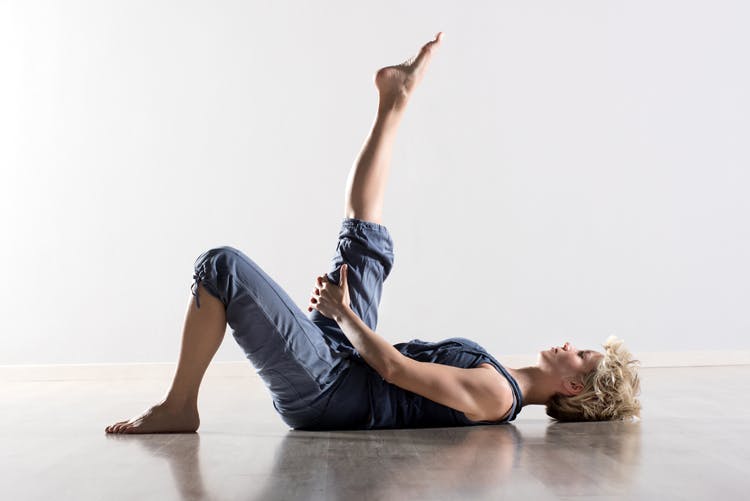Can we manage spasticity after stroke?

Spasticity is a neuromuscular condition usually caused by damage to the portion of the brain or spinal cord that controls voluntary movement. This damage causes a change in the balance of signals between the nervous system and the muscles. This disorder is a common symptom after stroke, arising in about 30% of patients, and usually occurs within the first few weeks. However, the onset of spasticity is highly variable and can occur in the short-, medium- or long-term post-stroke period. In the upper limbs, the most frequent pattern of arm spasticity is internal rotation and adduction of the shoulder coupled with flexion at the elbow, the wrist and the fingers. In the lower limbs, adduction and extension of the knee with equinovarus foot is the most observed pattern.
To manage spasticity after stroke, the following modifications can be made to your home:
- Ramp
- Grab bars
- Raised toilet seats
- Shower or tub bench
- Plastic adhesive strips on the bottom of the bathtub
- Braces, canes, walkers and wheelchairs may help you move about freely as you gain strength.
Behavioural evaluation
When evaluating spasticity, it is important to focus on:
- Identifying the clinical pattern of motor dysfunction and its source.
- Identifying the patient’s ability to control muscles involved in the clinical pattern.
- Differentiating the role of muscle stiffness and contracture.
- Using both The Modified Ashworth Scale and the Modified Tardieu Scale to monitor behaviour.
Physical therapy
The basic treatment for all patients presenting spasticity is physical therapy. Limiting muscle contractures and reducing hyperactivity for at least a short period of time can be helpful. The aim of stretching is to improve the viscoelastic properties of the muscle-tendon unit and to increase its extensibility. There are three approaches to physical therapy:
- Casting, a stretching method that immobilizes the limb in a stretch position, induces prolonged muscle stretching. This technique aims to improve muscle length, increase joint range of motion and to reduce contracture, pain and spasticity.
- Additional therapies, like hydrotherapy, cryotherapy, thermotherapy, vibratory stimuli or neurodevelopmental inhibitory techniques and robotics, are used to relax muscles and reduce the intensity of spasticity.
- Transcutaneous Electrical Nerve Stimulation (TENS) is another physical treatment that consists of electrical stimulations administered over the spastic region, the spinal dermatome or the peroneal nerve.
Orthoses
Orthoses are frequently used to complement physiotherapy sessions. Several types of orthoses (also called splints) exist but, as with physiotherapy, no practical guidelines have been defined so far. The aims of splinting are reductions in spasticity and pain, improvement of function, compensation for protective sensation and prevention of contracture and deformity.
Pharmacological agents
There are several pharmacological agents that can be used to treat spasticity:
- Oral treatments Baclofen, a gamma-Aminobutyric acid (GABA) agonist, are the most commonly administered oral treatment against spasticity. Baclofen crosses the blood–brain barrier and binds at the GABAb receptors of the spinal cord.
- Benzodiazepines, such as diazepam or clonazepam, increase the affinity of GABA for the GABA receptor complex. This leads to an increase in pre-synaptic inhibition and, therefore, a reduction of spinal reflex pathway.
- Gabapentin is an anti-convulsant structurally similar to GABA. Although this drug is usually used to treat neuropathic pain, it has been shown to be effective for decreasing spasticity at high doses.
- Tizanidine, an adrenoceptor agonist, is another centralacting drug that increases the pre-synaptic inhibition of motor neurons.
- Dandrolene sodium is a muscle relaxant that acts by binding the ryanodine receptor and affects calcium release, specifically in skeletal muscle to inhibit excitation/contraction coupling, thereby reducing spasticity.
Injection techniques
Injections can also be used to treat spasticity, depending on the severity of the spasticity and the motor function. The most common one is BoNT-A, which A is injected using either nerve stimulation or electromyographic or ultrasound guidance to locate the muscles to be injected.
Surgical treatment
In cases of severe spasticity, surgical treatments such as myelotomy, tenotomy and cordectomy can be used to decrease muscle contraction.
References
- Rehabilitation management of post stroke spasticity-January 2017.
- Spasticity after stroke: Physiology, assessment and treatment Aurore Thibaut et al. 29 October 2012.
